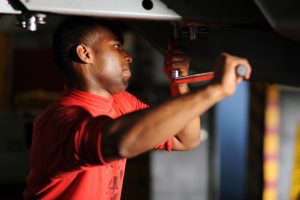Introduction
An emerging source of power for different kinds of industries nowadays is compressed air. Slowly, with its efficiency, it is now becoming a necessary commodity amongst households too. With an air compressor’s ability to convert power into potential energy that can be stored for later use, it had become quite helpful equally to building apartments and independent houses.
The capacity building apartments need compared to that of independent houses
When the storage tank’s capacity is reached, the air compressor shuts off. This is the basic principle each machine is built with. It needs to be used so that it would restart to continue compressing again.
A compressor’s power is measured in horsepower (HP) and cubic feet per minute of air intake (CFM). The volume of reserved compressed air, available to use at any time, is specified by the tank’s gallon size.
Air compressors were designed to adapt to different kinds of power sources. The most popular is the gas/diesel-powered and electric. But the commonly used in mobile applications and are rising being much preferred or utilized, are the ones taking power from vehicle engines or hydraulic ports.
Gas or diesel-powered compressors are widely used in remote areas where access to electricity is a problem. Expect that they are noisy and requires ventilation for exhaust gases.
On the other hand, electric-powered compressors are the ones that facilitate industrial operations such as production, garages, and workshops who have access to electricity 24/7. The common workshop or garage compressors requires around 110-120 volts or 230-240 volts.

Independent houses are more likely to reach the engineered upper limit than building apartments because it would opt for a smaller machine but it would still regard the number of users in that specific independent house. Whether it uses oil or not, there are significant maintenance methods that should be considered between these industrial air compressors.
While your compressed air system is there to help your operations run smoothly, it being an on-site generated utility, needs to have a detailed analysis specific to each household’s use. This is where production control of compressed air depends while gauging how to conform to the demands from each. Also, this is how spreading it accordingly over a large area is based upon.
Types of Air Compressors you can choose from
- Piston Type – for small and portable usage
- Rotary Vane – for small and portable usage
- Rotary Screw – for small and portable usage
- Centrifugal compressors – commonly used in very large applications
Uses of air compressors include:
- Filling gas cylinders with clean air
- Supplying divers with oxygen
- Supplying moderate-pressure clean air to offices and school buildings using pneumatic HVAC control system valves supplying power from air to pneumatic tools (ex. Jackhammers, filling tires with air)
- Production of large volumes of air with moderate pressure for large-scale industrial processes (ex. Oxidation for petroleum coking, cement plant bag house purge systems)
Compressors can be stationary or portable depending on its size and purpose. And while there are a lot of types to choose from, there are two main kinds that compressor maintenance may rely greatly on upon:
- Oil-injected
- Oil-less – is a system that has developed technology in great lengths but is more expensive, louder, and is prone to get damaged than oil-lubed pumps. The oil-less system delivers better quality air.
Final words:
Air compressors in buildings need to be checked more often than the ones used in single houses. It has to clear off any excess debris, meaning, all AC units should be routinely checked, thermostats checked as often as possible, and cleaning vents and routinely replacing filters. Planning is another thing. Implement these routine checks faithfully while you may call an expert to take care of those at the individual homes.

